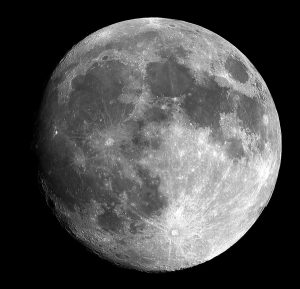 In terms of cellular phone service, 4G is all the rage. Now, it’s about to pop up in a very unexpected place: the moon.
In terms of cellular phone service, 4G is all the rage. Now, it’s about to pop up in a very unexpected place: the moon.
Vodafone Germany has officially teamed up with Nokia to build the first 4G network on the moon. The network will be officially built in 2019, and it is being supported by a Berlin-based group called Part Time Scientists (PTScientists). Once the network is established, it will support PTScientists’ private lunar rover mission, “Mission to the Moon.” The group intends to launch a lander and two small rovers to the moon in the near future (“The Moon Will Get Its Own Mobile Phone Network in 2019,” 2018).
“This is a crucial first step for sustainable exploration of the solar system. In order for humanity to leave the cradle of Earth, we need to develop infrastructures beyond our home planet,” said Robert Böhme, CEO and Founder of PTScientists. “With ‘Mission to the Moon’ we will establish and test the first elements of a dedicated communications network on the moon. The great thing about this LTE solution is that it saves so much power, and the less energy we use sending data, the more we have to do science! (“Nokia is selected by Vodafone to be its technology partner for Mission to the Moon project,” 2018)”
The Ultra Compact Network that is being developed by Nokia and Vodafone will be no more than three pounds.
“This project involves a radically innovative approach to the development of mobile network infrastructure,” Vodafone Germany CEO Hannes Ametsreiter said in a statement. “It is also a great example of an independent, multi-skilled team achieving an objective of immense significance through their courage, pioneering spirit and inventiveness.”
Once “Mission to the Moon” begins, PTScientists’ ALINA lander will use the 4G network to beam HD video live from the moon. The signal will be broadcast to a global audience from the Mission Control Centre in Berlin.
“This important mission is supporting, among other things, the development of new space-grade technologies for future data networking, processing and storage, and will help advance the communications infrastructure required for academics, industry and educational institutions in conducting lunar research,” said Marcus Weldon, chief technology officer at Nokia and president of Bell Labs.
References
Malik, Tariq. “The Moon Will Get Its Own Mobile Phone Network in 2019.” Retrieved March 5, 2018, from https://www.space.com/39835-moon-mobile-phone-network-ptscientists-2019.html.
“Nokia is selected by Vodafone to be its technology partner for Mission to the Moon project.” Retrieved March 5, 2018, from https://www.nokia.com/en_int/news/releases/2018/02/27/nokia-is-selected-by-vodafone-to-be-its-technology-partner-for-mission-to-the-moon-project.
